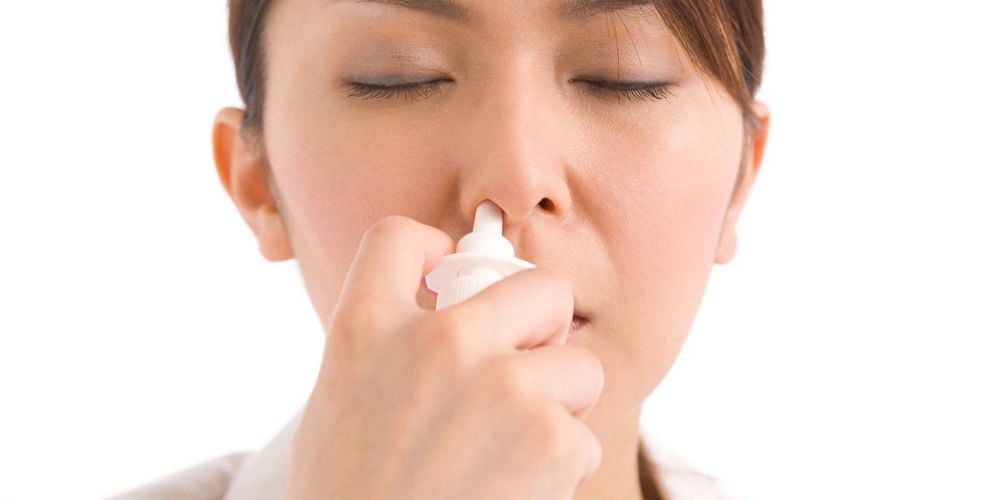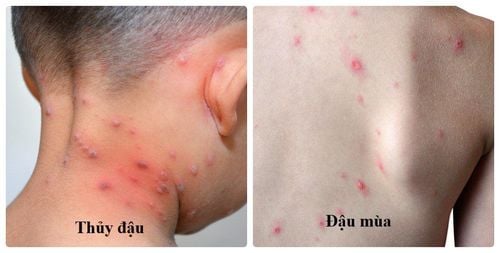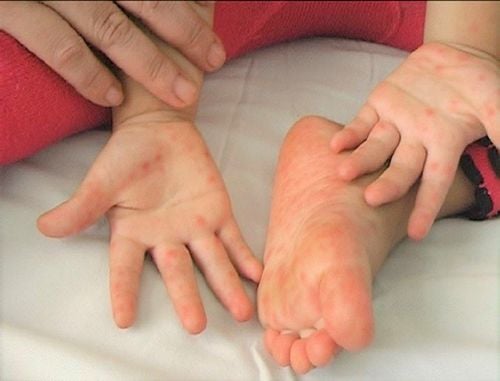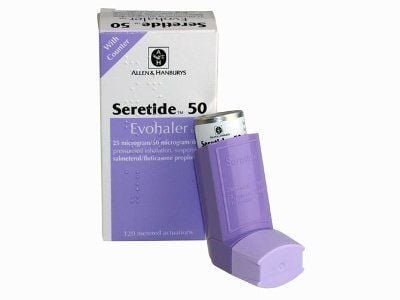Frontal sinusitis is a fairly common disease. Frontal sinusitis is persistent and very easy to get many times, affecting the health and quality of life of the patient.
1. Frontal sinusitis
The frontal sinuses consist of 2 small cavities located right above the eye sockets filled with air, equivalent to the position in the eyebrow area. Normally, the frontal sinuses will secrete a little mucus that flows through the nose. Frontal sinusitis occurs when the mucus cannot escape and is blocked in the sinuses, leading to increased pressure around the eyes and forehead.
Frontal sinusitis is the most common disease of all types of sinusitis. This is a fairly common disease and is very easy to occur in cold and dry weather, especially in the fall and winter.
2. Causes of frontal sinusitis
The most common cause of frontal sinusitis is a viral infection such as influenza virus, parainfluenza virus, etc. Acute frontal sinusitis can heal on its own within 1 week if the cause is viral. For bacterial sinusitis, it is less common, and antibiotics may be needed for treatment. There are also other causes of frontal sinusitis such as allergies, nasal polyps, deviated septum, etc.
Acute frontal sinusitis is when sinusitis symptoms last less than 4 weeks. If symptoms last more than 12 weeks, it becomes chronic frontal sinusitis.

3. Symptoms of frontal sinusitis
The most common symptom of acute frontal sinusitis is pain around the eyes or forehead. This pain is very characteristic and is described as pain above the eye socket and pain along both sides of the eyebrow arch.
Pain can be on one side or both sides of the sinus and is cyclical every day. The pain will increase from morning to noon and reach its maximum level. At this time, the pus in the nose flows out, the pressure inside the sinus will decrease and the pain will gradually subside. In the afternoon, the pain will recur.
Sometimes the pain is accompanied by watery eyes, the movement of the eye pupil also feels painful. The pain even spreads to the skin's surface. When the patient lies on his back, this pain becomes worse.
Other signs of frontal sinusitis include:
- Runny nose
- Cough, sore throat
- Nasal congestion
- Loss of sense of smell
- Bad breath
- Mild fever or high fever > 38.5 degrees Celsius
- Fatigue and body aches.
Depending on the cause, the symptoms of frontal sinusitis may vary. If the patient has symptoms of fatigue, fever, body aches and sore throat, the cause is likely to be a viral infection.
Bacterial sinusitis when the patient's symptoms do not improve and become more severe after 10 days. If symptoms persist for more than a few months, frontal sinusitis may be the result of an anatomical abnormality such as a deviated septum or nasal polyps.
4. Is frontal sinusitis dangerous?
Among the types of sinusitis, frontal sinusitis is the type of sinusitis that is most likely to lead to intracranial complications. These intracranial complications include: encephalitis, meningitis, brain abscess, epidural inflammation, and cavernous sinus thrombosis.
When patients experience these intracranial complications, they may have symptoms such as impaired consciousness or signs of localized neurological symptoms. If the patient is not treated promptly, there is a possibility of neurological sequelae, even death.
5. Treatment of frontal sinusitis

The primary goal of treating frontal sinusitis is to reduce the swelling or inflammation in the sinuses, enhance sinus drainage, and keep the sinuses clear. This approach also aims to limit infections and provide treatment if an infection is present.
Commonly used nasal decongestants include phenylephrine and oxymetazoline, as well as corticosteroid sprays such as fluticasone and Flonase. However, it's important to note that these measures only provide temporary relief. Over-usage can lead to side effects such as dizziness, headaches, anxiety, increased heart rate, and insomnia. Prolonged abuse of nasal decongestants may result in drug dependence.
Nasal irrigation is another essential method for effectively treating sinusitis. Proper nasal irrigation helps clear mucus and allergens, which can significantly alleviate discomfort for the patient.
Various other treatments may be needed depending on the underlying cause of frontal sinusitis, including:
- Acute frontal sinusitis caused by a viral infection can resolve on its own within 7-10 days. The treatment plan includes rest and improving physical condition. To improve symptoms, drink plenty of water and use nasal sprays or decongestants.
- If the sinusitis is caused by bacteria, in addition to treating the symptoms of the disease, the doctor may prescribe antibiotics for the patient, preferably beta-lactam antibiotics or respiratory quinolone.
- If frontal sinusitis is caused by allergies, patients should avoid contact with allergens. In addition, patients need to use antihistamines, immunotherapy or desensitization for treatment.
- When medical treatment is not effective, frontal sinus surgery will be performed to prevent life-threatening complications. Or due to anatomical abnormalities such as nasal polyps, deviated septum, etc. Some cases of acute frontal sinusitis and recurrence at least 3-4 times/year, or frontal sinusitis caused by fungus are also considered for surgery.
In addition, patients should drink plenty of water to help thin the nasal secretions and drain them more easily. Some folk remedies such as nasal steaming can also improve symptoms. However, patients with severe and prolonged symptoms should be treated appropriately at specialized medical facilities.
The Department of Otorhinolaryngology - Vinmec International General Hospital specializes in examining and treating sinusitis as well as common ENT diseases, tumors in the head and neck area, congenital malformations in the ENT area using common surgical methods such as surgery, microscopic or endoscopic tympanoplasty, fistula surgery, Bondy surgery, nasal-throat aerosolization, nasal turbinate injection, nasal turbinate cauterization, etc.
Please dial HOTLINE for more information or register for an appointment HERE. Download MyVinmec app to make appointments faster and to manage your bookings easily.













